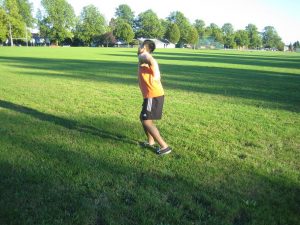Trochanteric bursitis is the inflammation of the bursa sac that is filled with fluid surrounding the upper portion of the femur bone called the greater trochanter. The trochanter bursa ensures smooth gliding of the connective tissue over a joint at the outer point of the hip. When this area becomes inflamed, it is called hip bursitis. Trochanteric bursitis causes pain in the hip and makes it difficult to run, walk and perform regular activities.
Symptoms of trochanteric bursitis
- A severe and stabbing pain felt on the outer part of the hip, near the buttocks and it is usually due to overuse or falling on the hip.
- Hip pain becomes worse after performing an activity
- Swelling of the area similar to pitting edema that develops in the ankles.
Treatment

- Avoid overuse injuries to prevent straining the tendons and cause inflammation of the underlying bursa sacs. This can happen with excessive jogging, cycling, kicking, stair climbing or standing especially on hard surfaces. Run on soft surfaces such as grass or a run on a treadmill. Reduce the mileage to lessen pain in the hip. Adjust the seat of the bike or have better suspension if cycling causes pain. If standing for long periods of time such as working as a cashier or other similar work, place a cushioned mat or rubberized mat on the floor to function as a shock absorber.
- Maintain proper posture. While standing, avoid leaning on one side and crossing the legs while sitting to prevent development of trochanteric bursitis.
- Apply a cold compress on the affected area for at least 15 minutes until it becomes numb to lessen the swelling and pain. Reapply 3-5 times every day as needed.
- Take the prescribed anti-inflammatory medications such ibuprofen or naproxen to lessen the pain and inflammation.
- Use a walking cane when moving around to relieve pressure placed on the affected hip and lessen the pain and inflammation. If both hips are inflamed due to bursitis, use crutches or a supportive walker.
- Avoid being overweight to prevent excessive pressure placed on the hip joint and prevent the development of bone spurs and arthritis which can result to hip bursitis.
- Drink plenty of water to prevent dehydration.
- Seek the help of the physical therapist for some rehabilitation exercises for stretching, strengthening and restoring the range of movement of the affected hip.
